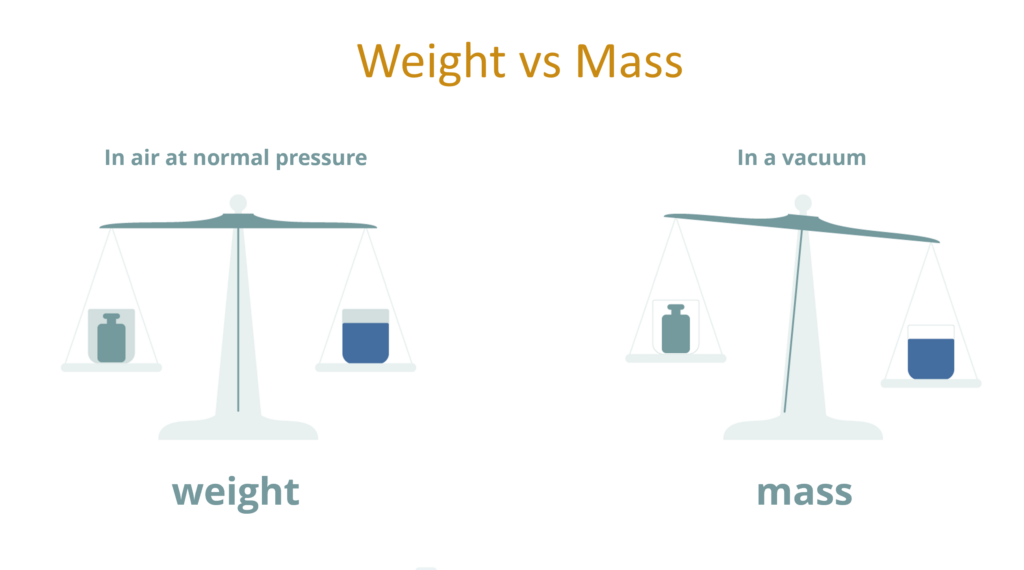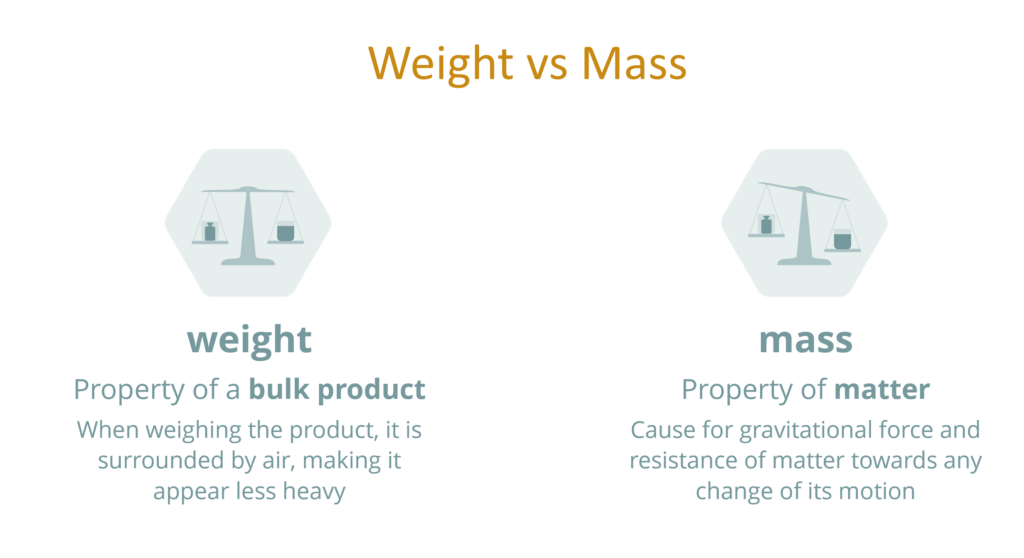What is the difference between mass and weight?
Liquid bulk product quantity values are either determined by flow meters (dynamic measurement), tank dips (static measurement), which both result in a volume quantity value, or via weighing bridges, which determine the weight (but not directly the mass*) of the product:
Since a weighing bridge is surrounded by air, the product (and also e.g. the carrying truck) floats in the air – there is a small but measurable air buoyancy effect to be considered, such that the measured weight value is not equal to the mass value of the product, which one wishes to determine.
Thus, one needs to distinguish between the weight (German: Wägewert) and the mass of the product (German: Masse):


In business transactions, one also wants to clearly distinguish between mass and weight quantity values. The difference is typically between 0.1 and 0.2 %, which is not negligible from a financial point of view.
Technically, the difference is accounted for by defining the calculation of a “density in air” besides the density (in vacuo) of the product.
There are several national and international measurement standards available that define how to calculate the density in air.
QuantityWare BCP supports all known measurement standards for density in air calculations and subsequent mass to weight conversions. Calculation of masses and weights in parallel is supported.
* direct mass measurement is possible via mass flow meters / Coriolis flow meters
Categories: Oil & Gas Quantity Conversion Basics FAQs
Back to FAQs



